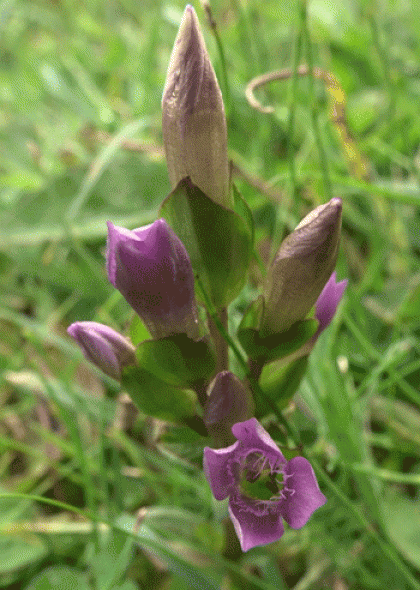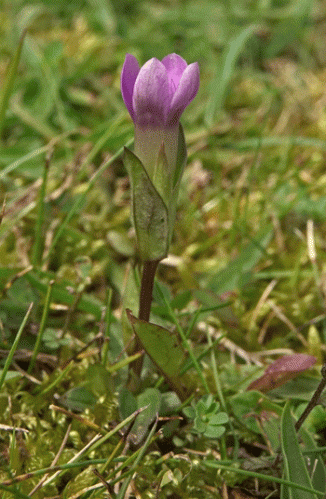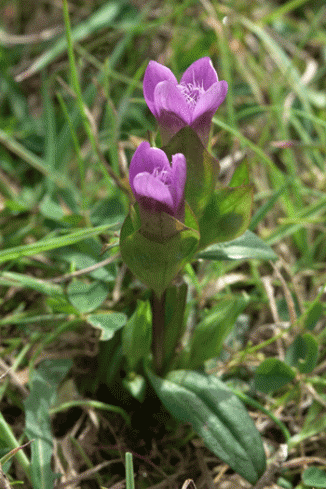This species could easily be confused with Autumn Gentian as they both tend to bloom around the same period – July to October. They both have similar purple- lilac flowers but if you exam the sepals closely, you will see the difference between the two species. In Field Gentian, the sepals are not all the same size; the 2 outer sepals are much broader than the 2 inner, almost hiding the 2 inner sepals. In Autumn Gentian, the 2 outer sepals are only slightly broader than the 2 inner making them look almost equal in size. Also Autumn Gentian frequently bears 5-petalled flowers whereas Field Gentian bears 4-petalled flowers, which are worth examining closely. They are erect, tubular in shape, with four lobes which spread out and, down in the throat of the flower, is a ring of white hairs. The oval-lanceolate leaves are dark green and opposite. It grows to approximately 30cm tall, is an annual or biennial, a native species and is found in short turf, on dune systems and on machair, principally in the area of Ireland which is above a line between Dublin and Galway. It belongs to the Gentian/ Gentianaceae family.
I found this species in Dunlewey and on Gola island, both in County Donegal, in September 2018 when I took the photographs.
If you are satisfied you have correctly identified this plant, please submit your sighting to the National Biodiversity Data Centre




